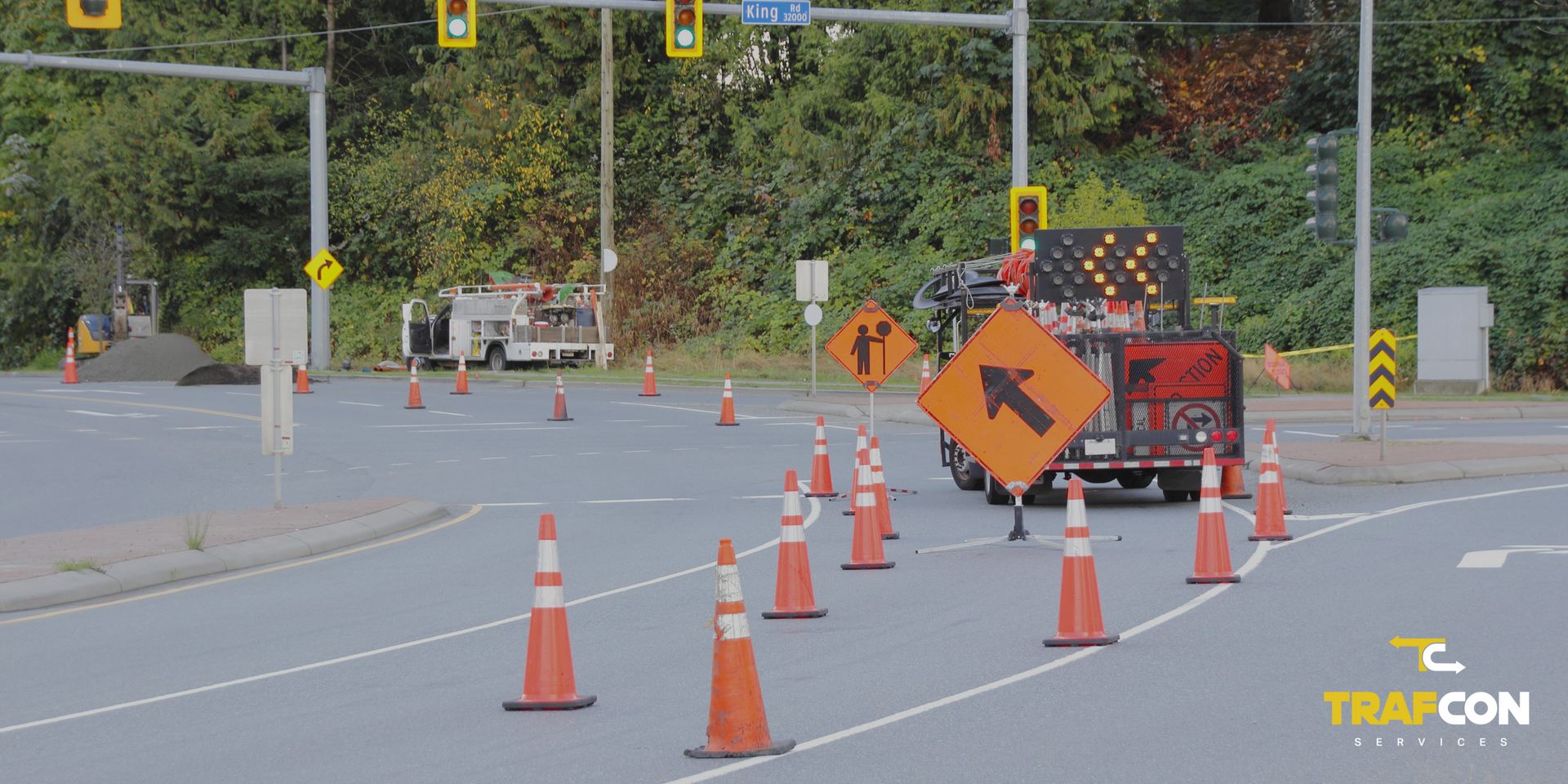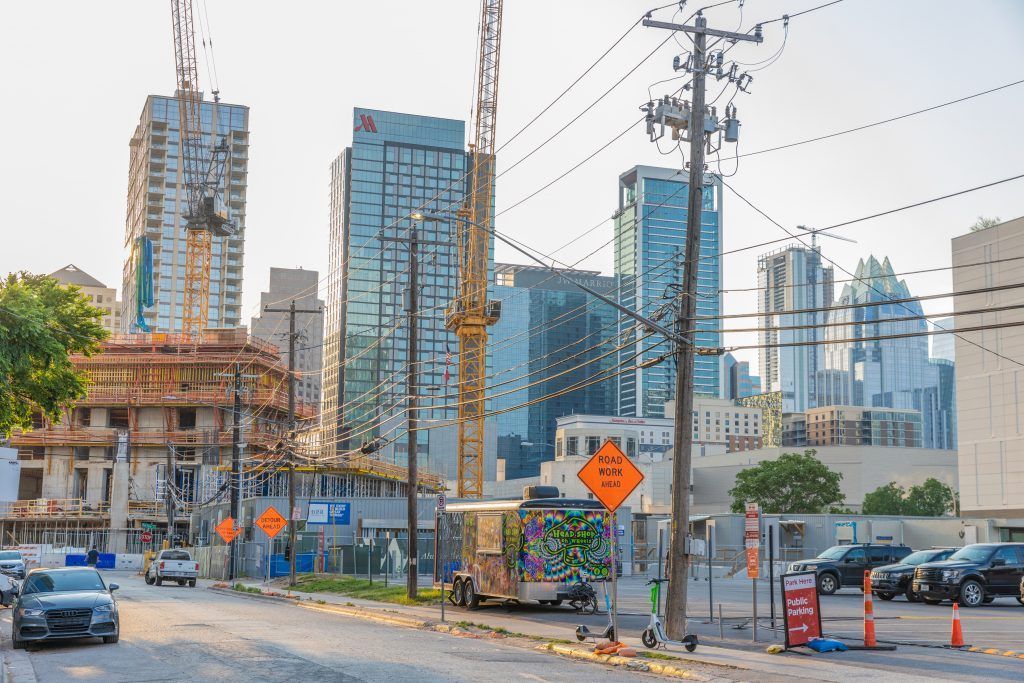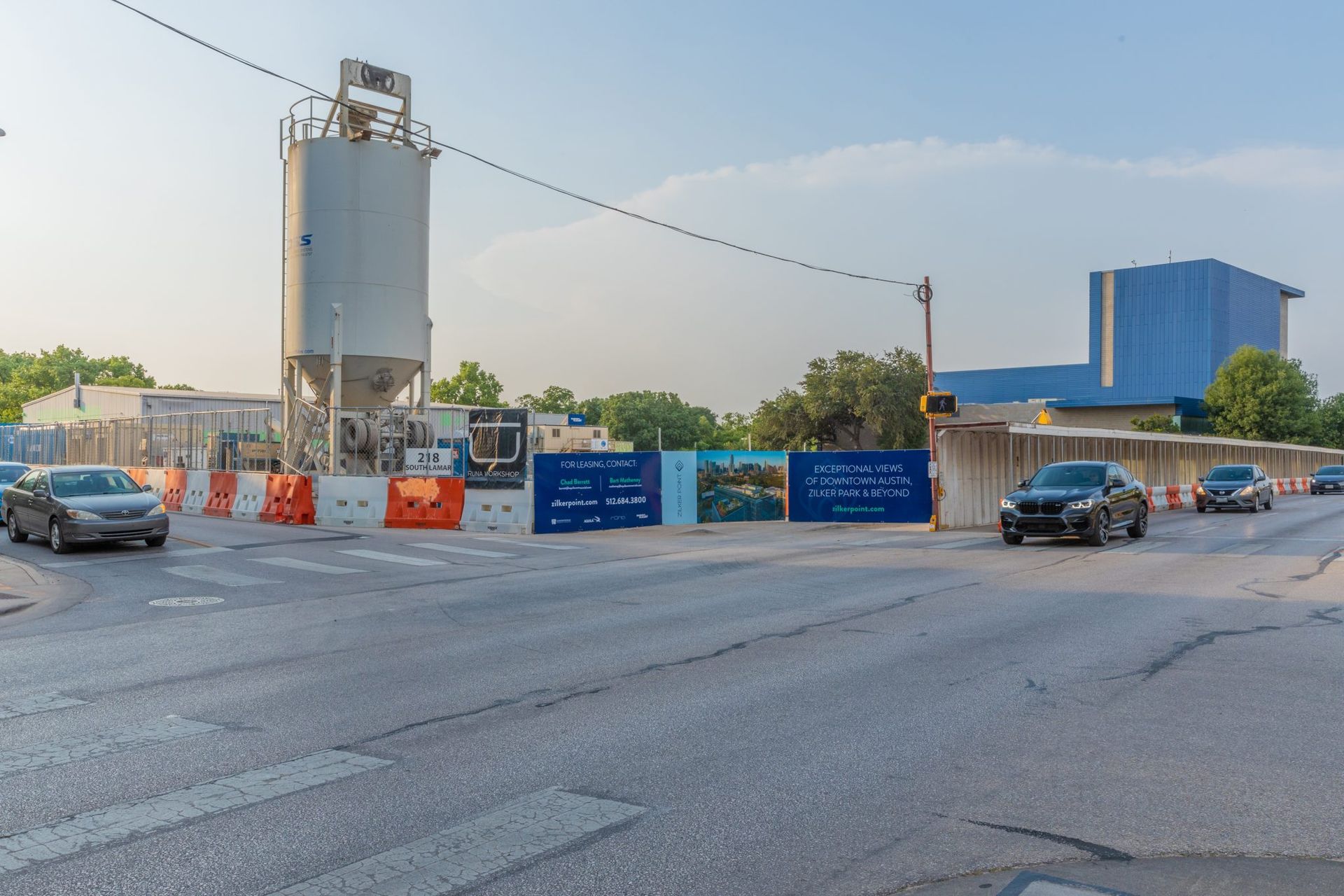Effective Austin Traffic Management: Strategies, Systems, and Solutions

Effective Austin Traffic Management: Strategies, Systems, and Solutions
Traffic management ensures safe and efficient movement on roads. It reduces congestion, prevents accidents, and improves travel times. This article will explore key strategies and advanced technologies used in traffic management to enhance road safety and efficiency.
Key Takeaways
- Traffic management is essential for urban mobility, focusing on safety and efficiency through advanced technologies and strategic planning.
- Key components of effective traffic control systems include real-time data analysis, operational procedures, and well-maintained physical infrastructure.
- Advanced Traffic Management Solutions, such as Intelligent Transportation Systems and Connected Vehicle Technology, play a crucial role in optimizing traffic flow and improving overall safety.
Understanding Traffic Management
The administration of traffic is crucial to enabling smooth and secure movement within city environments, managing the circulation of vehicles, pedestrians, and goods. The effectiveness of traffic control operations is paramount in mitigating roadway dangers and enhancing functionality amidst the hustle and bustle that characterizes densely populated areas where snarl-ups are frequent occurrences. By incorporating cutting-edge technology alongside thoughtful tactical frameworks into urban planning, smart management systems seek to elevate traffic handling procedures, thereby bolstering community well-being in metropolitan locations.
The efficacy of regulating vehicular flow hinges on how well movements adhere to set targets while considering associated costs. Traffic regulation not only encompasses tangible components like signalization devices, but also encapsulates the organized oversight required for these apparatuses’ optimal operation. Managing such intricate networks demands comprehensive stewardship ensuring all elements perform at their peak — a process heavily reliant on human expertise whereby personnel play an instrumental role in leveraging system efficiency through their skilled intervention.
Accurately assessing the quantity of data required to achieve statistically significant results in traffic evaluations is crucial. This involves using statistical techniques to estimate the data needed, ensuring credibility despite potential measurement errors.
One must not ignore maintenance’s significance within effective management strategies. Neglectful upkeep can escalate accident risks as well as amplify legal responsibilities for administrative bodies overseeing roadways. Maintenance serves as a pillar underpinning operational capacity: faltering parts precipitate systemic deterioration. Henceforth regular upkeep coupled with vigilant staff surveillance stands essential for preserving both expeditiousness and safeguarding measures inherent to sophisticated mobility arrangements.
Key Components of Traffic Control Systems
The primary objective of a traffic control system is to oversee the movement of pedestrians, goods, and vehicles. These systems aim to enhance safety and improve efficiency on thoroughfares. Constituting several integral components, they play an essential role in ensuring that vehicular flow remains smooth and hold-ups are kept at bay. Traffic control systems rely on structured operational procedures as well as rules and regulations to dictate how vehicular circulation is supervised.
A crucial aspect of traffic control involves bolstering safety by providing clear directives to those using roadways. To optimize vehicle motion and diminish mishap probabilities, comprehensive traffic management plans integrate various protective measures such as suitable signage and barricades. Tailored specifically for diverse transportation demands and conditions, these schemes ensure consistent efficacy throughout numerous situations.
Essential players in this framework are the traffic controllers who manage active monitoring duties over vehicular dynamics while also making timely adjustments in signal patterns or addressing irregularities disrupting regular flows. With real-time data at their fingertips alongside progressive technology applications, these professionals can steer decisions towards upgrading both performance metrics—efficiency—and user welfare within the transport infrastructure.
To establish an efficiently operating total network for controlling transit passage requires not only unifying individual elements but also orchestrating cooperation across multiple agencies involved with its governance. Organizing the entire system of traffic control, including the role of operators, infrastructure, and communication, is crucial for ensuring the safe and efficient movement of vehicles and for reducing accidents through consistent standards across different transportation modalities.
Traffic Flow Optimization
Traffic flow optimization is a critical component of traffic management, aiming to minimize congestion, reduce travel times, and improve the overall efficiency of the transportation network. Achieving optimal traffic flow requires a multifaceted approach that leverages advanced technologies and strategic planning. Here are some key strategies for optimizing traffic flow:
- Traffic Signal Control: One of the most effective ways to manage traffic flow is by optimizing traffic signal timings. By adjusting the timing of traffic signals based on real-time data, traffic managers can reduce congestion and minimize stops, leading to smoother traffic flow and shorter travel times.
- Route Guidance: Providing real-time traffic information to drivers helps them make informed decisions about their routes. Advanced navigation systems and mobile apps can offer alternative routes to avoid congested areas, thereby distributing traffic more evenly across the network and reducing overall congestion.
- Traffic Flow Modeling: Using mathematical models to analyze and predict traffic flow patterns is essential for identifying areas of congestion and optimizing traffic signal control. These models can simulate various scenarios and help traffic managers develop strategies to improve traffic flow.
- Dynamic Lane Management: Adjusting lane usage in real-time can significantly enhance traffic flow. For example, converting underutilized lanes into high-occupancy vehicle (HOV) lanes during peak hours can encourage carpooling and reduce the number of vehicles on the road, leading to less congestion.
- Ramp Metering: Regulating the flow of traffic onto highways through ramp metering can prevent congestion and reduce merge conflicts. By controlling the rate at which vehicles enter the highway, traffic managers can maintain a steady flow of traffic and minimize bottlenecks.
Effective traffic flow optimization requires a combination of data analysis, modeling, and real-time monitoring. By leveraging advanced technologies, such as intelligent transportation systems (ITS) and data analytics, traffic managers can optimize traffic flow, reduce congestion, and improve the overall efficiency of the transportation network.
Advanced Traffic Management Solutions
As urban populations swell and the demand for road space intensifies, it is essential to implement sophisticated strategies for traffic control. Real-time monitoring and responsive adjustments are necessary to manage constantly changing traffic conditions and incidents effectively.
The Advanced Traffic Management System (ATMS) addresses this challenge by enhancing vehicular flow and safety through the integration of instantaneous data collection. ATMS employs cutting-edge technologies to observe current traffic states, modify signal timings on-the-fly, and relay pertinent information directly to motorists – thereby boosting the overall operational efficacy of our transportation systems.
Fluctuations in traffic flows necessitate adjustments in signal timing and system performance, emphasizing the need for reliable monitoring and timely updates to accommodate these changes effectively.
The Intelligent Transportation Systems (ITS), which saw widespread implementation in New York City’s Department of Transportation in 2020, represent another forward-thinking method for controlling vehicle movement within urban areas. ITS harnesses analytical approaches informed by live data streams with an aim toward managing vehicular demand more efficiently while also heightening travel time dependability.
Through evaluating up-to-date congestion levels and refining route guidance as a result, ITS can ameliorate bottlenecks leading not only to steadier vehicular progression but also minimizing transit delays—key outcomes when amalgamated into existing frameworks tasked with overseeing citywide mobility.
Meanwhile, advancements in Connected Vehicle Technology are transforming how we oversee roadway operations. This technology facilitates direct communication among vehicles and between vehicles and infrastructure, enhancing traffic management and safety. By providing real-time updates from other vehicles and centralized controllers, connected vehicle technology helps reduce congestion and improve driver safety. It also contributes to environmental benefits by minimizing idling and reducing transport-related pollution, especially in densely populated urban areas.
It is vital that these progressive measures become standard practice given the increasing demands on limited road capacities. Implementing connected vehicle technology can significantly enhance traffic flow, reduce congestion, and improve overall safety. By integrating these advanced systems into our traffic management strategies, we can create smoother and more efficient transportation networks, ultimately benefiting both drivers and the environment.
Connected Vehicle Technology
The implementation of connected vehicle technology stands at the cutting edge of contemporary traffic control strategies, offering substantial enhancements in managing traffic flow and mitigating congestion. Connected vehicles enhance interactions with existing traffic control systems, enabling a reduction in travel delays while heightening road safety measures. This innovative approach allows for vehicular intercommunication as well as interaction with transportation infrastructure, delivering instantaneous data which aids in fine-tuning signal timing and improving routing choices.
Integrating this advanced vehicle technology into current traffic systems is facilitated by utilizing solutions such as Digi cellular technologies that mesh well with tools like traffic surveillance cameras and navigational apps. These integrations foster uninterrupted communication between individual vehicles and centralised traffic controllers, paving the way for more effective oversight of vehicular movement.
In consequence, not only does connected vehicle technology streamline the ebb and flow of daily commute patterns, but it also plays a pivotal role in lessening environmental impact through reduced emissions and lower fuel consumption attributed to fewer instances of stop-and-go driving conditions.
Intelligent Transportation Systems (ITS)
Smart transportation systems, known as Intelligent Transportation Systems (ITS), are pivotal for enhancing the management of traffic by leveraging strategies rooted in real-time data. This approach aims to boost both travel efficiency and dependability. ITS plays a key role in alleviating congestion and advancing route optimization, contributing to more fluid traffic movement and minimizing delays. The implementation of such systems is particularly advantageous within densely populated cityscapes where managing high volumes of traffic demand is essential for preserving seamless mobility.
An outstanding advantage offered by ITS lies in its capacity to provide precise, up-to-the-minute insights for both road users and those who control the flow of vehicles. Equipped with this intelligence, decisions regarding timing of signals, allocation of lanes, and navigation can be fine-tuned—thereby elevating the efficacy that characterizes urban transportation networks.
Cities like New York have borne witness to marked enhancements concerning vehicular throughput thanks to adopting these advanced technologies—a testament reinforcing their capability not only at transforming but also significantly improving urban conveyance landscapes through refined management tactics focused on preempting excessive vehicle buildup while bolstering system-wide efficiency.
Effective Operations and Maintenance
The proper functioning and routine maintenance of traffic control systems are vital for their safe and efficient operation. By conducting regular upkeep, small issues can be detected before they escalate into larger problems that may require more extensive and expensive solutions. The management responsible for traffic control should constantly assess the system’s performance to improve its efficiency, adapting swiftly to fluctuations in traffic patterns. Collaborative efforts from various departmental personnel, including those involved in traffic management as well as enforcement, are essential in maintaining a unified approach for top-notch system performance.
For an effective operation of any given traffic control system, it’s imperative that both technological components like hardware and software work seamlessly alongside proficient operators who oversee these systems. Operators play a key role by keeping an eye on changing road conditions, updating signal timing accordingly, and promptly reacting to any incidents which might occur thereby assuring continuous flow of movement.
It is important to acknowledge the need for administrative backing along with adequate funding when striving towards creating integrated urban-area wide traffic systems. It’s this support which drives development forward, ensuring reliable equipment is available at all times, thus facilitating exceptional operational capabilities of such setups – spanning not only tangible elements but also intangible aspects such as the requisite software tools enabling dynamic monitoring & necessary adjustments.
A consistent dedication towards preserving every aspect involving these complex frameworks proves indispensable if one aims at enhancing overall efficacy coupled with reinforcing security measures within the realm controlling vehicular passage or simply put, managing mobility effectively requires attention being paid consistently across each individual component constituting said arrangements.
Routine Maintenance Tasks
Maintaining traffic control systems through routine upkeep is essential for their continued efficiency and dependability. This requires regular checks, cleansing operations, mending work, and the renewal of protective coatings to guarantee all system components are in working order. The systematic preservation involves traditional measures needed to maintain traffic control infrastructure, which includes verifying signal timing accuracy, examining road markings’ integrity, and confirming that signs are visible.
Preventive maintenance seeks to reduce the likelihood of failures within the traffic control system by preemptively tackling issues before they escalate into significant problems. Comprehensive assessments should take place every one to three years with these systems to evaluate their functionality and pinpoint opportunities for enhancement.
Remedial maintenance takes precedence in swiftly addressing breakdowns or any instance where equipment falters. This ensures consistent operation around the clock without interruptions within the control mechanisms responsible for managing traffic flow efficiently.
Impact of Inadequate Maintenance
Neglecting the upkeep of traffic control systems can have severe repercussions, including a rise in accidents and longer delays for motorists. When these systems deteriorate due to lack of proper maintenance, their ability to manage traffic efficiently diminishes, potentially increasing liability for the authorities responsible for their operation. Cities are faced with considerable challenges when it comes to managing these demands while contending with ongoing costs associated with system preservation.
Should critical sensors within a traffic control system fail, this could result in an inadequate approach to controlling vehicular flow on roads. Such lapses might provoke various shortcomings regarding how traffic is managed. It is imperative that any issues concerning maintenance be swiftly addressed to avoid collisions and promote uninterrupted movement of vehicles.
Ensuring consistent upkeep and making prompt repairs stand as vital measures for safeguarding both safety standards and performance efficiency within our transportation networks’ management apparatus—their neglected condition directly impacts all who depend on them daily.
Evaluation and Performance Measurement
Evaluating the performance of traffic management systems is crucial to ensuring their effectiveness and identifying areas for improvement. This involves measuring key performance indicators (KPIs) that provide insights into the efficiency and safety of the transportation network. Here are some essential KPIs used in traffic management:
- Travel Time: Measuring the time it takes for vehicles to travel through a particular section of road or network helps traffic managers assess the efficiency of traffic flow and identify areas where improvements are needed.
- Traffic Volume: Monitoring the number of vehicles using a particular road or network provides valuable information about traffic demand and helps in planning and optimizing traffic control measures.
- Traffic Speed: Measuring the average speed of vehicles on a particular road or network is essential for understanding traffic flow and identifying areas where congestion is causing delays.
- Congestion: Assessing the level of congestion on a particular road or network helps traffic managers identify bottlenecks and develop strategies to alleviate traffic delays.
- Safety: Monitoring the number of accidents or incidents on a particular road or network is crucial for evaluating the safety of the transportation system and implementing measures to reduce accidents.
To evaluate the performance of traffic management systems, traffic managers can use various data sources, including:
- Traffic Sensors: Collecting data on traffic volume, speed, and occupancy through sensors embedded in the road surface or installed along the roadside provides real-time information on traffic conditions.
- Traffic Cameras: Providing real-time video feeds of traffic conditions, cameras help traffic managers monitor traffic flow and identify incidents or congestion in real-time.
- GPS Data: Collecting data on vehicle location and speed through GPS devices installed in vehicles or mobile apps provides valuable insights into traffic patterns and travel times.
- Social Media: Monitoring social media feeds for reports of traffic incidents or congestion can provide additional real-time information that helps traffic managers respond quickly to emerging issues.
By analyzing these data sources, traffic managers can identify areas of congestion, optimize traffic signal control, and implement strategies to improve traffic flow and reduce congestion. Regular evaluation and performance measurement are essential to ensuring the effectiveness of traffic management systems and improving the overall efficiency of the transportation network.
Role of Data in Traffic Management
Management of traffic is critically dependent on data, which provides essential insights for understanding the behavior of traffic and guiding decision-making. Agencies in urban settings draw upon historical information regarding traffic to pinpoint trends and shape strategies for managing traffic flow. The effectiveness of different techniques for controlling traffic is assessed through data collected manually in the field, offering a rich source that can be exploited to enhance the efficiency of how we control and manage vehicle movement.
The analysis of gathered data plays an indispensable role by allowing urban agencies concerned with managing vehicular movement to decode patterns and tendencies within this domain. Precision in collection efforts is influenced by sampling methodologies as well as study architectures, which are designed to guarantee both accuracy and dependability in captured datasets. Statistical methods facilitate estimating what quantity of input data will yield statistically robust outcomes when examining vehicular flows—thus laying down a sturdy groundwork from which informed choices may arise.
Sharing up-to-the-minute information related to road use between various organizations can significantly boost operational handling capabilities while also improving reaction times during disruptions or accidents. Traffic controllers equipped with instantaneously updated details have the advantage when it comes time to revise signal timings or adjust lanes—all aimed at curtailing bottleneck scenarios while promoting smoother transitions across our roadways. Harnessing such immediate datasets stands out as vital when attempting proactive management over travel demands along with preserving streamlined operations throughout our transportation infrastructure systems.
Data Collection Techniques
o gather the essential data for efficient traffic management, a range of different data collection methods are utilized. Pneumatic tubes that act as mechanical counters offer reliable information by tracking the movement and number of vehicles on busy streets. They provide crucial insights by monitoring traffic flow rates and vehicular speeds.
Embedded within road surfaces, inductive loop detectors serve as another prevalent means to collect traffic data. By continually providing vehicle counts and speed measurements, these detectors enable analysis into how traffic behaves across varying times.
Cameras employing computer vision form part of video-based techniques for analyzing how vehicles move through an area.
These approaches provide a visual account of current traffic states when combined with manual procedures for gathering data ensure transportation authorities are equipped with necessary information to make well-informed decisions related to managing roadways effectively.
Data Utilization
The management of traffic flow and mitigation of congestion are enhanced through the analysis and interpretation of gathered data. During routine operations, traffic control systems automatically gather, organize, and scrutinize this information to maintain a continuous feed that aids in pinpointing areas prone to congestion. The insights gained from this data enable traffic controllers to fine-tune signal timings as well as lane assignments with the goal of streamlining vehicle movement and cutting down on hold-ups.
To ascertain the impact of various traffic control strategies, conducting before-and-after studies is indispensable. Traffic agencies can assess how effective their measures have been by examining vehicular conditions prior to implementation against those post-implementation. This systematic method ensures not only that data is critically assessed, but also leverages it for bettering overall management practices while boosting safety on roads by allowing for necessary modifications based on these evaluations.
Traffic Management in Adverse Conditions
In the face of inclement weather, it is essential to have robust traffic management strategies in place to protect both motorists and pedestrians. Methods for controlling traffic under such conditions involve setting up extra signage, modifying the timing of signals, and enacting provisional controls over traffic flow. By harnessing live data feeds, systems designed for managing traffic can provide timely updates on road statuses, which enhances safety during harsh weather.
The successful handling of emergencies necessitates a well-coordinated effort among different entities that includes seamless communication and resource sharing to navigate through vehicular challenges efficiently. It’s imperative that emergency response protocols are followed meticulously so as to expedite the distribution of aid and convey crucial information swiftly to those affected by bad weather.
Equipping personnel with adequate training tailored specifically toward tackling the complications brought about by severe weather plays an integral role in fortifying our readiness for such events. This preparation is a critical aspect of developing comprehensive plans geared towards confronting emergency situations effectively.
Weather-Related Traffic Management
Management systems for traffic that respond to weather conditions utilize real-time data to alter the timing of traffic signals, thereby increasing safety on roads when bad weather strikes. By dynamically adjusting these signals as the weather deteriorates, such systems work to bolster road user protection. For instance, in wet or rainy situations, those managing traffic may fine-tune signal timings and keep a watchful eye on areas prone to hazards so that overall safety is heightened. Adapting speed limits according to varying weather conditions forms part of this approach aimed at safeguarding motorists.
Implementing these strategies ensures smoother flows of vehicular movement even amidst challenging meteorological scenarios by mitigating both potential accidents and consequent hold-ups. Through harnessing live data paired with adaptable traffic lights, these sophisticated management configurations can dispense effective route guidance in a timely manner—this results not just in expedited journeys, but also upholds the well-being of everyone traversing the roads.
Emergency Response Coordination
Intelligent traffic management systems capitalize on congestion intelligence and the positions of vehicles to modulate road routes and the timing of traffic signals. This assists emergency response vehicles in traversing through traffic swiftly during crises that impact safety. First responders improve their communication capabilities amidst emergencies with the help of Digi FirstNet ReadyTM cellular routers, which operate on Band 14. For expediting evacuations, these coordination efforts can sometimes include reversing lanes.
The collaboration between different agencies is essential for effective emergency response by streamlining traffic management to ensure rapid reaction times and secure travel conditions. It requires an exchange of up-to-date information and shared resources so all involved parties work synchronously.
Employing cutting-edge technologies combined with robust communication networks enables significant improvements in handling vehicular flow promptly when managing critical incidents. These advancements are pivotal for successful coordination amongst various stakeholders during high-pressure scenarios where efficient transportation is crucial.
Special Events Traffic Management
Efficient traffic management is essential for the seamless operation of special events, facilitating the orderly movement of vehicles and reducing interruptions. The surge in vehicle numbers, heightened foot traffic, and restricted route options present specific difficulties during these occurrences.
The successful planning and strategic execution of control measures are vital to guarantee safety and efficiency at such gatherings. These initiatives address increased demand while mitigating congestion issues to secure unhindered access and efficient navigation through designated routes.
Event Planning and Coordination
Effective traffic control for special events hinges on the collaboration between event organizers and local authorities to evaluate traffic implications and create management strategies. It is imperative that those planning events, municipal representatives, and personnel in charge of traffic control, join forces to devise robust measures for managing the flow of vehicles during such occasions. Preparing for unforeseen situations with contingency plans is also vital to tackle any unexpected disturbances that could affect transportation.
In unity, these involved parties can guarantee the efficient execution of traffic control protocols which serve to reduce inconvenience while maximizing safety for all participants. Diligent preparation coupled with seamless coordination stands as a cornerstone for triumphantly handling vehicular movement related to events.
Implementing Temporary Traffic Control Measures
Temporary measures for traffic control, including the deployment of cones and barricades, play a critical role in directing both vehicle and pedestrian traffic amidst events. The incorporation of temporary traffic signals alongside crosswalks significantly bolsters safety by facilitating synchronized movement between pedestrians and vehicles. Strategies such as rerouting through detours or enacting road closures are also adopted to regulate the movement of vehicles and pedestrians throughout these occurrences.
By ensuring smooth and secure passage during notable events, these controls diminish potential accidents and avoid hold-ups. Through implementing these provisional regulations for controlling traffic, those organizing events can establish an orderly atmosphere that prioritizes attendee wellbeing while maintaining efficient transit flow.
TrafCon Services: Your Local Expert in Austin, Texas
TrafCon Services excels as a leading provider of traffic control design and consulting services, with its core market based in Austin, Texas. It stands out as one of the premier consultants for designing traffic control solutions and obtaining permits within the region and extends expertise in managing ROW fee consultations along with other related services.
Engineers and general contractors operating locally are encouraged to engage TrafCon Services when seeking assistance for their traffic management requirements. The company offers specialized support tailored to meet diverse needs concerning effective traffic oversight.
Comprehensive Traffic Control Design
TrafCon excels at crafting intricate plans for traffic control that cater to particular functional demands while adhering to regulatory standards. Their focus lies in creating traffic systems that put the safety of all road users first, from vehicles and pedestrians to cyclists. They strive for efficiency by enhancing the flow of traffic and reducing hold-ups through carefully considered signal positioning and innovative solutions in traffic management.
The proficiency TrafCon possesses in designing controls for managing urban transportation leads to a boost both in safety measures and overall system efficiency. With their holistic methodology, they ensure comprehensive scrutiny across all elements of traffic control, which translates into reliable and effective systems for regulating vehicular movement.
Permitting Assistance and Consulting
TrafCon provides expert assistance in maneuvering through the City of Austin’s Right of Way Management Approval Network (ROWMAN) to acquire requisite permits. They assist customers in understanding and navigating the intricate approval process within the city, helping determine when they can apply standard details or if bespoke plans are required for traffic management permit acquisition.
The proficiency TrafCon possesses regarding permitting procedures guarantees that clients attain essential approvals promptly while minimizing postponement risks and adhering to local ordinances. Offering extensive support both in procuring permits and providing consultation, TrafCon stands as a crucial ally for projects focused on managing traffic effectively.
Special Events Management
TrafCon possesses a wealth of expertise in traffic control management, particularly for special events, ensuring the implementation of control strategies is carried out with high efficiency. Their substantial background in directing traffic flow during such events guarantees effective coordination and minimal inconvenience. The adeptness of TrafCon in organizing the intricacies of vehicular movement at these occasions promises orderly and secure operations.
In close partnership with event organizers and municipal staff, TrafCon certifies that special events unfold without hitches while upholding both safety standards and operational efficacy. With their established history of success in managing intricate scenarios involving traffic at large gatherings, they stand as a dependable entity for complex traffic management needs.
Summary
In essence, the key to achieving smooth and safe transportation within cities hinges on adept traffic management. This all-encompassing guide has delved into the intricacies of controlling urban traffic, from grasping fundamental traffic flow concepts to embracing cutting-edge technologies and tackling challenges under harsh conditions.
It is imperative that regular upkeep, strategic planning informed by data analysis, and proficient coordination remain at the forefront of optimizing our current traffic systems.
With their specialized knowledge in crafting plans for managing vehicular movement and offering consultative advice, TrafCon Services stands as an instrumental entity in orchestrating Austin’s bustling streetscape.
Their extensive array of services—ranging from help with obtaining permits to Traffic Control Desig—designates them as an indispensable collaborator for any endeavor related to regulating city transport networks.
Through adopting sophisticated technological solutions alongside thoughtful planning measures, municipalities are well-positioned to enhance road user safety while minimizing congestion-related impediments across thoroughfares.
Schedule a FREE Site Walk Today
Enhance your traffic control strategies by scheduling a complimentary site walkthrough with TrafCon Services. Call (512) 994-7830 today to arrange your free assessment, designed to identify your specific traffic management needs and ensure the smooth execution of your projects.
Frequently Asked Questions
What is a key element of an effective traffic control plan in Austin?
To ensure the safe and efficient flow of traffic in Austin, a robust traffic control strategy is essential. It must include well-defined signage, barricades, and alternative routes to reduce interruptions and boost safety for all road users, including motorists and pedestrians.
What does TrafCon Services help clients navigate?
TrafCon Services assists clients in navigating the City of Austin’s Right of Way Management Approval Network (ROWMAN).
This guidance ensures compliance and facilitates smoother project implementation.
What type of services does TrafCon Services offer?
TrafCon Services specializes in traffic control design, consulting on traffic control and ROW fees, permitting assistance, and managing special events.
Their comprehensive expertise ensures safety and organization in traffic management.
How does TrafCon Services approach traffic control design?
TrafCon Services places a high emphasis on safety and efficiency when designing traffic control systems. By working intimately with clients, they craft customized solutions designed to meet the unique requirements of every project for optimal traffic management.
How does TrafCon Services support special events?
TrafCon Services supports special events by closely collaborating with event planners and city personnel to ensure seamless project execution and safety throughout the event.
SHARING IS CARING
New Paragraph











